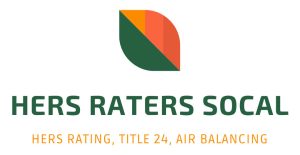- 13418 Via Del Palma Ave Whittier, CA 90602
- 45648 Via Puebla Temecula CA 92592
A duct leakage HERS test is a pressure test to measure any air loss in your duct system. The HERS Rater seals off the duct system to pressurize it and uses special duct-testing equipment that measures the input and loss. The Energy Department found that the average homes duct system leaks approximately 30% and made duct leakage testing mandatory in October of 2005.
A HERS Rater, or Home Energy Rating System Rater, is an individual certified by the California Department of Energy through a state-approved organization. These experts are trained to conduct energy conservation tests and assessments. HERS Raters offer a wide range of services, including duct testing, builder inspections for LEED or Energy Star Programs, energy credits evaluation, and other energy-saving inspections.
Regardless of whether you only replaced the condenser, a duct leakage test is necessary. Since October 2005, any changes or additions to the coil, condenser, furnace, or more than 40 feet of ducting require a HERS Duct Leakage Test. The city mandates CF-6R and CF-4R forms before finalizing the permit. Effective January 1, 2010, the DOE added a refrigerant charge measurement. After completing the HERS Rating, we can supply you with both forms.
The HVAC system (Heating/Ventilation/Air Conditioning) is the largest energy consumer in a home. Ductwork delivers conditioned air through floor or ceiling vents (supplies) and returns untreated air from rooms to be reconditioned. Ducts contain and insulate the air flow. Leaky ducts lead to wasted conditioned air, resulting in significant energy and monetary losses.
Every HVAC system has a central component that handles air, converting negative airflow (suction) into positive airflow (blowing). Supply side duct leaks cause conditioned air to escape into unoccupied areas like the attic. Return side leaks allow unconditioned air to mix with the conditioned air, leading to higher costs and potential health risks.
There are four methods to achieve passing results, with three focusing on calculated air flow and leakage within CFM.
They are as follows:
15% of calculated airflow will leak using the 400 CFM per ton formula.
A 60% reduction in initial leakage, before change-out, is possible.
Leakage outside can be measured, aiming for less than 10%, with a blower door and taped-off duct supplies.
If none of the above methods pass, visual leaks can still be sealed by the contractor, verified with smoke by a HERS rater for passing results.
Condenser
To determine the size of the condenser unit, locate its model number, which will indicate the unit’s size in tons when divided by twelve. This calculation is based on 400 CFM per ton. For example, a 4.5 ton unit will have 1800 CFM.
For the furnace, the calculation involves the furnace’s output BTU’s specified on the model number. For instance, if it’s 89,000 BTU, multiply it by 21.7 to get 1931 CFM. To ensure compliance within the passing zone, the smaller value between the condenser and furnace calculations is used to calculate the target leakage in CFM.
To calculate the target leakage, multiply the total air load (e.g., 1800 CFM) by the allowed leakage percentage for change-outs (e.g., 15%), resulting in 270 CFM. After sealing all supply registers, the duct system is pressurized using a duct blaster, and sensors are attached to measure static pressure. The system is pressurized to 25 Pascal, the standard air pressure in a full-capacity duct system, and the manometer measures the air leakage in CFM.
Newly installed duct systems are allowed a leakage of 6%. In new construction, the allotted leakage is 4% if tested at rough-in and 6% for the final test. Please refer to question 3 for alterations and change-outs.
Building codes provide building owners or agents with two options for verification. They can hire a 3rd party for verification or choose to be part of a sample. In the sample option, contractors form groups of up to 7 jobs with required duct sealing. A HERS rater randomly selects one from the group for testing. If the selected home passes, all others in the group pass too. However, if it fails, the first home is retested until it passes. If the second test also fails, the entire sample group must undergo 100% testing.
A calibrated manometer is paired with a duct blaster for testing.
The time needed varies based on the building or home size, typically ranging from 30 minutes to 2 hours.
You can choose to install an EER 12 with a refrigerant charge measurement or with TXV, featuring 0.82 or 0.92 AFUE, along with enhanced duct insulation.
Every building owner has the option to choose. If they decide to be part of a sample, they must be informed of the choice to opt for 100% testing instead.
Conducting 100% testing for a home or building ensures full compliance with all California State requirements and minimizes leakage effectively. Well-functioning HVAC systems provide numerous benefits, including cost savings, healthier living environments, fuel conservation, and environmental protection.
In California, the average home experiences more than 30% of air flow leakage solely from the ducts.


For detailed quote for Hers Testing, Air Balancing or T24 Consulting And Calculations.